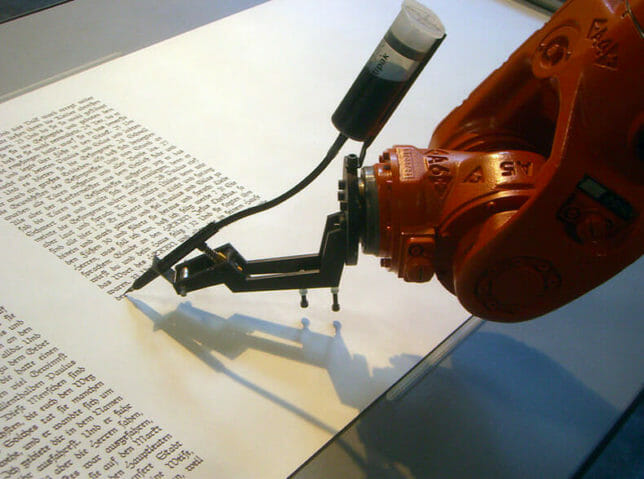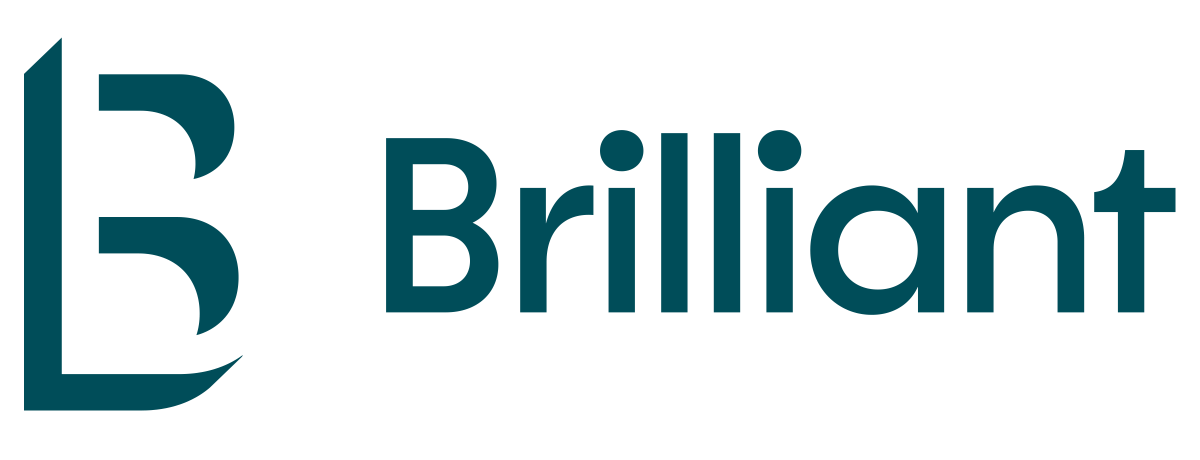‘So… What’s the line?’
As a copywriter, that’s a question I ask myself almost every day, if not every few hours.
If by some freak circumstance I don’t ask the question, you can bet one of my colleagues will.
Sometimes, they won’t even ask, they’ll just look at me expectantly.
Their eyes will say it all: ‘Hey Jonny… What’s the line?’
Some may find the idea of that daunting, but for me, it’s one of the best parts of the job.
I revel in trying to solve the riddle of a slogan as if it were a fiendish cryptic crossword puzzle, jumbling terms of phrases around my brain and on my tongue.
And then, when all the rumination is over, I get to say the best thing in the world:
‘Here’s the line.’
It’s like being the only person in the pub who knows the answer to a quiz question or scoring a 90th-minute winner to propel your team to victory.
It’s copywriting’s greatest pleasure.
AND NOW, THE ROBOTS WANT TO TAKE IT AWAY FROM ME.
When I say robots, what I really mean is highly intelligent AI software, software designed to write pitch-perfect copy for any client. An AI that never asks ‘what’s the line?’ and only ever says “here’s the line”.
Everyone from Lexus to L’Oreal has been dabbling with copywriting software for the last few years, to the point where trailblazers Pencil AI claim to have written 5 million adverts since 2018. A total even the best advertising agencies could only dream of.
Yup, it seems when they’re not dreaming of electric sheep, androids are now thunking up some seriously effective copy for the world’s biggest brands.
Which begs the question… Is the copywriting profession under threat!?

Finger Clickin’ Good: AI’s Data-Driven Slogans
Black Friday is one of the biggest days of the year for UK retail, particularly when it comes to the sales of electrical goods.
So for Currys plc (Britain’s biggest electrical retailer), it’s pretty much vital that their campaigns and slogans get ahead of the competition.
In 2019, their head of customer marketing, Saul Lopes, asked the age-old question to his savvy team of copywriters…
‘Hey guys… What’s the line?’
But Mr. Lopes also asked the same question to an external party.
That party was Phrasee, an AI platform that specialises in brand language optimisation.
AKA THE ROBOTS.
One of the most advanced softwares of its kind, Phrasee can create a bespoke language for your brand and generate a wealth of optimised copy in just a few clicks. Something it would take the human brain several hours to achieve.
It does this through NLG (Natural Language Generation), AI programming which scans your brand’s style, tone of voice, target audience and campaign goals to create a model which can spit out natural, on-brand messages in real-time.
Phrasee can soak up decades of your brand’s advertising, previous campaigns or even company emails to form copy that is designed to speak with more charm and direct sway than a human could ever produce on their own.
And just like in the movies, it’s an AI destined to become ever more powerful thanks to its deep learning technology.
By constantly absorbing customer and market data, it’s always discovering the top-performing language for your brand and so with every message it sends out, the copy gets a little smarter.
The more historical data it has, the better it can predict a tagline’s success rate. Forget ‘what’s the line?’, Phrasee wants to know ‘what’s the data?’
Phrasee In Action
Ebay was one of the first big companies to enlist the help of Phrasee, buying into their methods all the way back in 2016.
With over 100 million email subscribers, Ebay had a direct line to a dedicated target audience, a personal point of contact for a fan base the size of Egypt.
But as fantastic as this might seem, there was never any guarantee those 100 million would ever open their emails. So the subject lines needed to be pretty damn enticing.
Pre-2016, Ebay’s internal team were brainstorming new subject lines on a weekly basis. It was up to them to deliver highly relevant headlines their subscription list couldn’t glance over, a repetitive and likely stressful experience.
Enter Phrasee, who promised Ebay they could take this strenuous copywriting task off their hands and make optimised, engaging lines without losing the distinctive Ebay tone of voice.
Since working together, Ebay’s average email click rate has gone up by 32%/
Suffice to say, Phrasee’s copy was a huge success.
In an even more interesting (or perhaps terrifying) development, Phrasee and eBay have now also partnered with Movable Ink, an AI technology that promises 1:1 personalisation to your marketing, optimising visuals and copy based on a customer’s past search results and more.
This means eBay’s email headlines and body copy are now personally tailored to each of those 100 million subscribers.
And that average click rate? It’s now up 42%.
Can you really blame Currys for getting in touch?
Both Phrasee and Movable Ink had proven they could boost revenue for their clients, and so Currys hired them both for their 2019 Black Friday event.
Mr. Lopes’ team of copywriters came up with dozens of lines for the Black Friday sale, but it was Phrasee’s that was chosen:
‘The time is now.’
That line (combined with Movable Ink’s personalised visuals and messaging) delivered a 92% uplift in click rates and in turn a 102% increase in campaign revenue.
Need I remind you that this was for a Black Friday event, already one of the most lucrative periods of the year for Currys.
THE ROBOTS HAD WON.

The Best A (Hu)Man Can Get?
Phrasee’s instant wins with consumers are hardly a surprise.
People spent the entire 20th century being bombarded with advertisements and so the 21st century has begun to distrust them.
People use ad-blockers when scrolling the web, they filter mailing subscriptions into their spam. They actively don’t want to hear the suave patter of an ad person.
Phrasee’s deep learning has clearly picked up on this, and so in turn tends to create more clear CTA-style slogans which can cut to the heart of the matter without being on the nose or obviously manipulative.
But are they advanced enough to do this without a copywriter as their guide? I’m not so sure.
For AI to deliver their copy successfully, they still need us as much as we need them. So it stands to be AI and humans long before it becomes AI versus humans.
Case in point, Currys did not go out and fire all their internal copywriters and advertising brand agency after the success of their Black Friday event.
Because not only was Phrasee’s data based on every piece of copywriting Currys had produced before, it also needed the current crop of copywriters to help feed it a social media marketing strategy.
Instead of asking themselves ‘what’s the line?’, they asked Phrasee, who took their message strategy and bounced it across a thousand options, picking the best one.
It’s a bit like a more advanced spell-checker, finessing and refining their ideas and suggesting data-backed answers – you said ‘you’re gonna love it’… Did you mean ‘I’m lovin it!’?
It’s also telling that Phrasee’s biggest successes so far all seem to be mainly through email, a channel that requires more straight-laced, sales-driven copy.
When the objective is to make an instant sale and force a click, then AI can absolutely help refine that messaging to find the most effective line possible.
But could it write an interesting television advert? An irreverent social post? An ad that actually gets people talking?
That might be the plan, but given the way such software currently measures data, it seems a long way off.
The AI can’t know whether someone was inspired by an advert. Whether they laughed. Whether they cried. Whether a positive brand association was created. They only know if it made you click or not.
Such software may have proven that it can guarantee big brand revenue in the short term. But it’s track-record for eliciting responses beyond a sale is less conclusive…

Creativity Will Win The War
As a refining tool or suggestions generator, the rise of AI copywriting doesn’t really worry me. In fact, it might be nice to occasionally lean on it.
What would worry me though is an advertising landscape that relies on it.
The current AI software creates marketing that’s efficient rather than inspiring, using everything that’s come before to inform its new, more effective copy.
A future where they rule is not one where original ideas are spun out by machines. It’s a factory process, in which lines are churned out one after the other… Perfect, mass-produced zingers designed to do just the job.
But today, copywriting is still as much an art form as it is an industry, and AI software can’t find inspiration the same way a human mind can.
Based on the pirate radio DJ’s and Tom Wolfe books of his youth, would AI ever come up with a line like Dave Trott’s ‘Lipsmackin’ thirstquenchin’ acetastin’ motivatin’ goodbuzzin’ cooltalkin’ highwalkin’ fastlivin’ evergivin’ coolfizzin’ Pepsi’?
Probably not.
Inspired by the last words of a killer on death row, would AI ever come up with Dan Wieden’s iconic ‘Just Do It.’, Nike’s call to arms since 1988? Would it even look for innovation in such dark recesses?
Definitely not.
So, until they can, and provided the advertising industry wants to retain its values of distinction and creativity, the copywriter looks set to live a little while longer.
If not, I’m sure the evil androids of the future are all laughing at this in binary.
01010111 01100101 01101100 01101100 00100000 01100100 01101111 01101110 01100101 00100000 01100110 01100101 01101100 01101100 01100001 01110011 00101100 00100000 01111001 01101111 01110101 00100000 01110111 01101111 01101110 00101110
References:
https://movableink.com/
https://f.hubspotusercontent20.net/hubfs/4094824/ebay_CaseStudy_Updated.pdf
https://f.hubspotusercontent20.net/hubfs/4094824/DixonsCarphone_CaseStudy_Updated.pdf
https://www.bbc.co.uk/news/business-57781557
https://businesscloud.co.uk/blog/2021/02/08/pencil-ai-has-generated-5m-adverts-for-big-brands/



